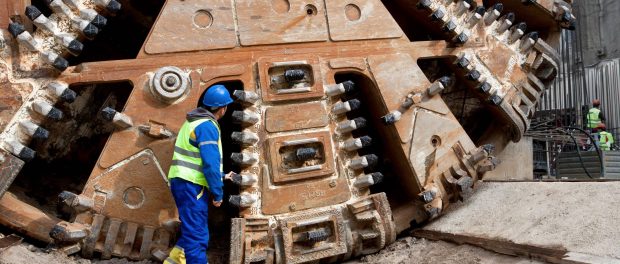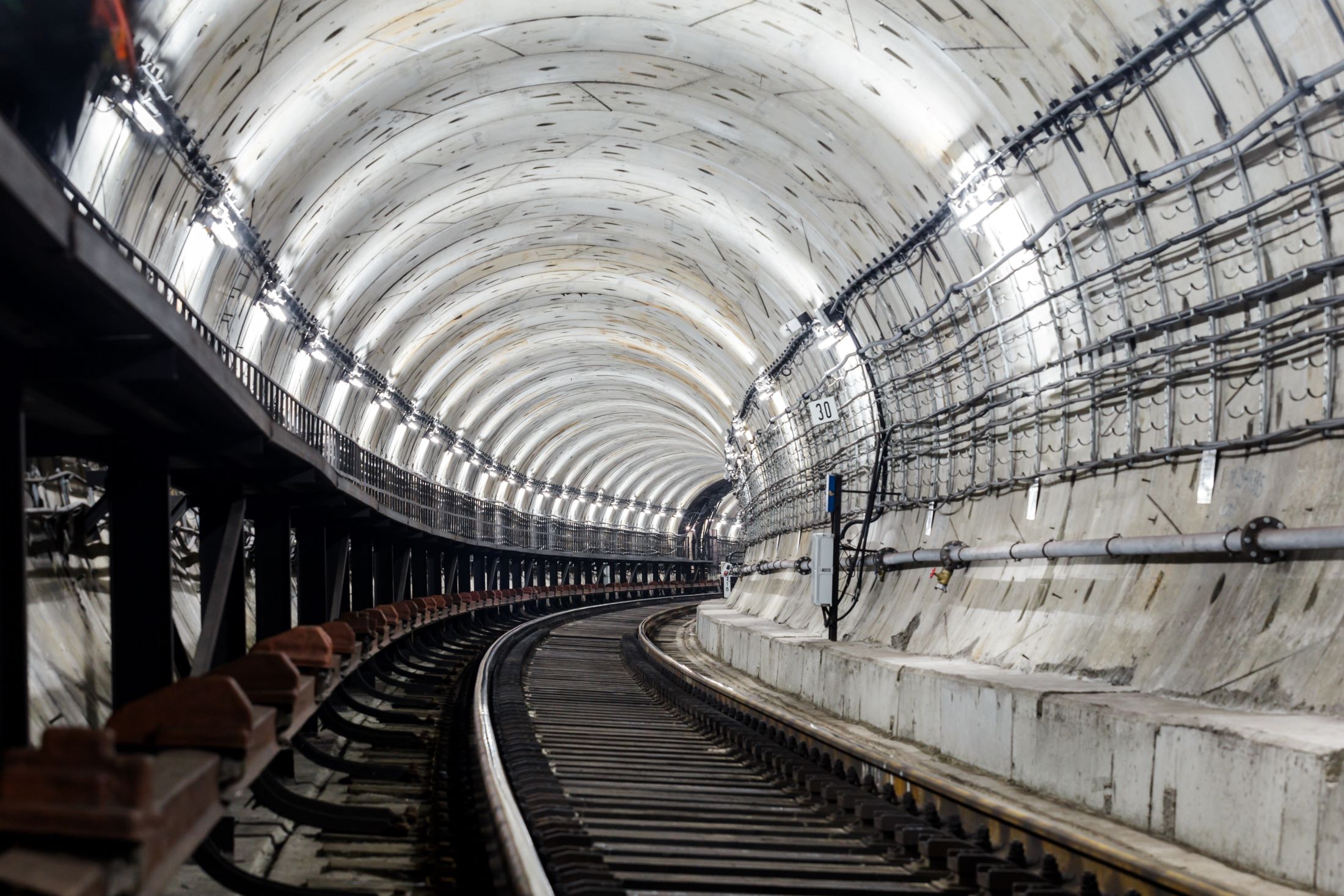Ensuring tunnel boring safety: Managing ground settlement around underground tunnels
 Engineers next to a tunnel boring machine, Geobear
Engineers next to a tunnel boring machine, Geobear
Tunnelling-induced ground subsidence can reach up to 50 mm, and sometimes beyond, enough to disrupt the structural integrity of overlying buildings. Here, Oskar Nojszewski, commercial director at geotechnical contractor Geobear Poland, explains the considerations for managing ground settlement caused by tunnel boring and the solutions that offer engineering teams simpler and more sustainable options.
As tunnel boring machines (TBM) move along underground, the volume loss factor means that earth settlement above the excavation is inevitable. While mitigating features like earth pressure balance shields and slurry shields can help, tunnel boring crews work alongside cementitious grouting injection teams to fill voids and compensate for settlement as the TBM proceeds.
This practice, known as compensation grouting, requires injection shafts to supply grout tens of metres below ground. A third crew monitors sensitive electronic equipment like extensometers and hydrolevels to advise the injection team on the deformation of ground layers.
TBM speed, pressure on the head and the rate of grout injection can all be manipulated to control the degree of settlement that occurs, but it isn’t an exact science. The main risk with tunnel boring, therefore, is uncontrolled subsidence beneath built-up areas. Affected buildings and infrastructure can be damaged to the point of needing demolition or even collapsing themselves.
Tunnel excavation by TBM is much faster than the traditional ‘drill and blast’ or mining techniques and runs unceasingly with a dynamic schedule. It’s extraordinarily expensive, however, with weekly project costs of millions of Euros. Any unplanned downtime that suspends drilling is therefore a critical issue.
Geopolymers save the day at Łódź
During the construction of Łódź’s underground railway in late 2024, the monitoring crew working alongside the tunnel borers noticed a dramatic degree of settlement beneath tenement housing on 1 Maja Street. Within 24 hours, the ground below its foundations had shifted by more than 50 millimetres.
The lead engineer set a threshold; if settlement crossed 15 mm, the buildings would be condemned to demolition. The contractor called in Geobear to reverse the settlement and lift the buildings back into place.
Geobear uses an expanding geopolymer solution, injected through narrow boreholes drilled into the ground, to fill voids and stabilize ground. Unlike the weeks needed to prepare broad injection shafts used by cementitious grouting, these holes can be planned and drilled in a single day.
When the ground engineering expert arrived on site, the soil beneath the subsiding buildings was already extremely weakened, with signs of significant voiding under the structure, meaning its job was two-fold. It had to stabilise the ground before lifting the buildings’ foundations.
Additionally, the emergency nature of the situation presented several unknowns. The changing rate of settlement and soil behaviour made it akin to engineering a living organism. Rapid calculations and implementation were essential to meet the ground improvement targets before further failure occurred.
The speed of drilling geopolymer injection boreholes isn’t the only time advantage compared to cementitious grouting. Geobear was able to set up its solution without requiring any heavy machinery, which comes with delays in obtaining planning and environmental permission from local authorities.
Environmental permission in particular is growing harder to attain with traditional construction solutions — although cement is inert with respect to its soil environment, the grout mixed in to control its plasticity and the time taken to cure can be harmful if it leaches into groundwater. The Environment Agency is tightening its controls on pH-altering substances discharged into water or soil and requires justification if low-impact alternatives like geopolymers are available but unused.
Geobear stabilised the soil to support the endangered housing and lift it above the critical threshold of 15 mm settlement. The Łódź underground railway project continues with hopes to conclude in 2028. Emergency response is only one part of the advantages that geopolymers can bring, however.
By using them to compensate for volume loss factor from the beginning, contractors can save precious time and keep TBMs running with greater control over the associated settlement risks.
Educate yourself on how your construction site can benefit from geopolymers before you encounter a subsidence emergency.


